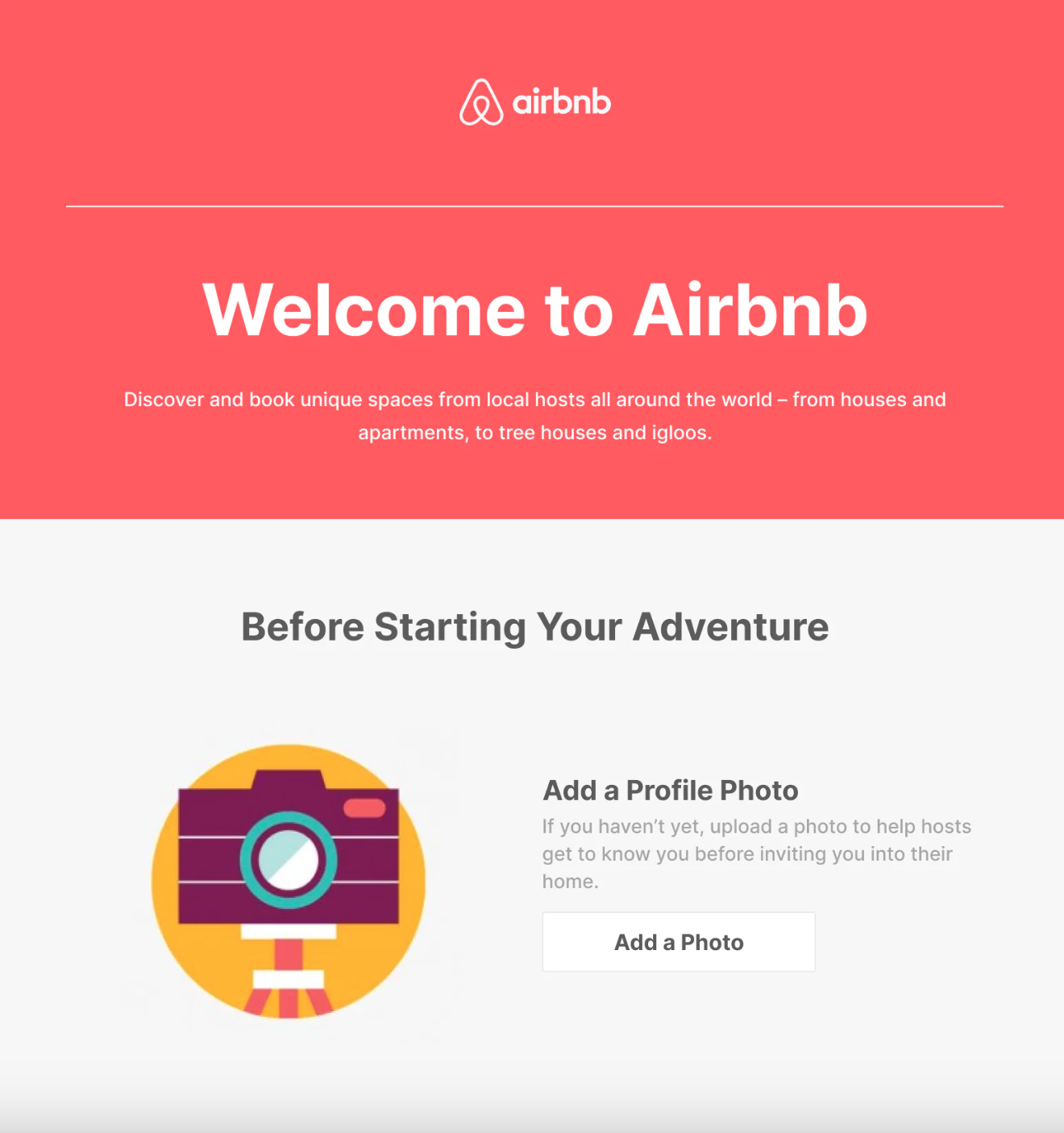Onboarding emails are a crucial part of any business's communication strategy, especially for those looking to build strong relationships with new customers or users. These emails serve as the first point of contact after a customer signs up or makes a purchase, setting the tone for their entire experience with your brand. In this article, we'll explore what onboarding emails are, their benefits, examples of effective onboarding emails, and what to include in them. Finally, we'll discuss how TruVISIBILITY's Messaging app can help businesses streamline their email campaigns.
Table of Contents
- What Are Onboarding Emails?
- Benefits of Onboarding Emails
- Examples of Onboarding Emails
- What to Include in Onboarding Emails
- How TruVISIBILITY's Messaging App Helps Create Onboarding Emails
- Conclusion

What Are Onboarding Emails?
Onboarding emails are a series of automated messages sent to new customers or users to welcome them, provide essential information, and guide them through the initial stages of using a product or service. These emails are designed to educate, engage, and support new users, ensuring they have a smooth and positive experience from the start.
Benefits of Onboarding Emails
Onboarding emails offer numerous benefits for businesses of all sizes. Let's take a look at some reasons businesses of all industries should invest time and energy into creating onboarding emails.
Ready to start building and sending onboarding emails right away? TruVISIBILITY's Messaging app can make the email-creation process easy. That's not to mention the many email templates you can use to fit your specific message. These templates are fully customizable to match any business's brand colors, logos, messaging, and more.
Improved User Engagement
By providing timely and relevant information, onboarding emails help new users understand how to use your product or service effectively, increasing their engagement and satisfaction. These emails can guide users through initial setup, highlight key features, and offer tips for getting the most out of the product. Engaged users are more likely to become active and loyal customers.
Higher Retention Rates
A well-structured onboarding process can reduce churn rates by ensuring that new users feel supported and confident in using your product. When users receive the guidance they need right from the start, they are less likely to abandon the product out of frustration or confusion. Consistent communication during the onboarding phase can reinforce their decision to choose your product.
Increased Product Adoption
Onboarding emails can highlight key features and benefits, encouraging users to explore and utilize your product to its full potential. By showcasing different functionalities and providing use cases, you can help users discover how your product can solve their specific problems. This not only increases product adoption but also enhances the overall user experience.
Personalized Experience
Tailored onboarding emails can address specific user needs and preferences, creating a more personalized and meaningful experience. Personalization can include using the recipient's name, referencing their specific use case, or suggesting features based on their behavior. A personalized approach makes users feel valued and understood, which can lead to higher satisfaction and loyalty.
Enhanced Brand Loyalty
By nurturing new users and providing ongoing support, onboarding emails can help build long-term relationships and foster brand loyalty. Regular check-ins, helpful tips, and invitations to provide feedback show users that you care about their success. This ongoing engagement can turn new users into brand advocates who are more likely to recommend your product to others.
Examples of Onboarding Emails
Effective onboarding emails typically follow a sequence that guides new users through their initial interactions with your product or service. Here are some examples of onboarding emails and what to include in them:
Welcome Email
The first email in the onboarding sequence should welcome the new user, thank them for signing up, and provide an overview of what to expect next. Include a friendly greeting, a brief introduction to your brand, and any immediate actions the user should take.
This example of an Airbnb email is meant to welcome users to use their platform and get started by adding a profile photo. This call-to-action gets email contacts to easily begin making an account.

Getting Started Guide
This email should provide step-by-step instructions on how to get started with your product or service. Include links to tutorials, videos, or help articles that can assist the user in setting up and using your product.
Feature Highlight
Send an email that highlights a key feature of your product, explaining its benefits and how to use it. This helps users discover valuable functionalities they might not have noticed otherwise.
Tips and Tricks
Share useful tips and best practices to help users get the most out of your product. This email can include advanced features, shortcuts, or common use cases. Often, businesses will showcase their latest blog article in the email, which is a guide to a tip or trick to using their product, for example.
Check-In Email
After a week or two, send a check-in email to see how the user is doing and offer additional support if needed. This shows that you care about their experience and are available to help.
Feedback Request
Ask for feedback on the onboarding process and the product itself. This can provide valuable insights for improving your onboarding strategy and product offerings.
What to Include in Onboarding Emails
To create effective onboarding emails, consider including the following elements:
Personalization
Use the recipient's name and tailor the content to their specific needs and preferences. Personalized emails can significantly increase engagement and make the user feel valued and understood.
Clear and Concise Content
Keep the message clear and to the point, focusing on the most important information. Avoid overwhelming the user with too much detail at once, ensuring they can easily grasp the key points.
Visuals
Use images, videos, and infographics to make the content more engaging and easier to understand. Visual elements can help break up text and highlight key points, making the email more visually appealing.
Call to Action (CTA)
Include a clear CTA that guides the user to the next step, whether it's setting up their account, exploring a feature, or contacting support. Make sure the CTA stands out and is easy to follow, encouraging users to take action.
Support Information
Provide links to help articles, FAQs, or contact information for customer support. This ensures users know where to go if they need assistance, making them feel supported and confident.
Consistent Branding
Ensure that the emails reflect your brand's voice and visual identity. Consistent branding helps build trust and recognition, reinforcing your brand's presence and reliability.
How TruVISIBILITY's Messaging App Helps Create Onboarding Emails
TruVISIBILITY's Messaging app is a powerful tool for businesses looking to master their onboarding email campaigns. With its user-friendly design tools, stunning templates, and first-class deliverability, the Messaging app makes it easy to create and send effective onboarding emails.
Key Features of TruVISIBILITY's Messaging App
Drag-and-Drop Editor
Create beautiful, pixel-perfect emails without any coding knowledge. Customize templates to fit your brand and make any layout adjustments with ease.
Automation
Automate your onboarding email sequences to ensure timely and consistent communication with new users. Set up triggers based on user actions to send the right message at the right time.
Personalization
Use custom contact fields and segmentation to deliver personalized content that resonates with each user.
Analytics and A/B Testing
Track the performance of your email campaigns with real-time analytics. Use A/B testing to optimize subject lines, content, and CTAs for better engagement.
Integration
Seamlessly integrate with other tools and platforms, such as chatbots and CRM systems, to create a cohesive onboarding experience.
By leveraging TruVISIBILITY's Messaging app, businesses can streamline their onboarding email campaigns, enhance user engagement, and build lasting relationships with their customers.
Conclusion
Mastering onboarding emails is essential for businesses looking to provide a seamless and positive experience for new users. By understanding the benefits, crafting effective emails, and utilizing tools like TruVISIBILITY's Messaging app, you can create an onboarding process that sets your users up for success and fosters long-term loyalty.
Key Takeaways
- You can get higher retention rates and improve personalization with onboarding emails, which are meant to welcome leads and eventually turn them into loyal customers.
- Businesses that send a 'getting started guide', 'tips and tricks' email, and 'check-in' emails boost their brand recognition and raise their chances of gaining sales.
- Always include clear content, great images, gifs, or videos, call-to-actions, personalization, and support information in onboarding emails since new leads likely don't have much information about your business.
Want to receive more articles?
Sign-up for our weekly newsletter to receive info that will help your business grow



